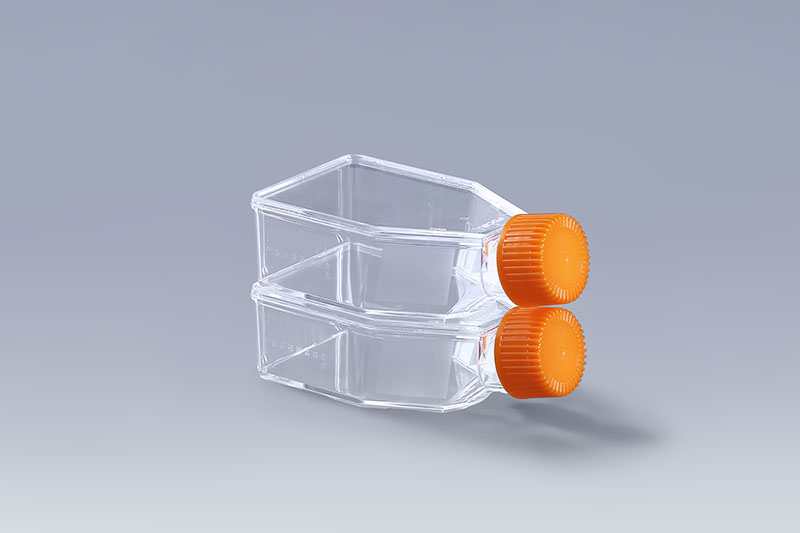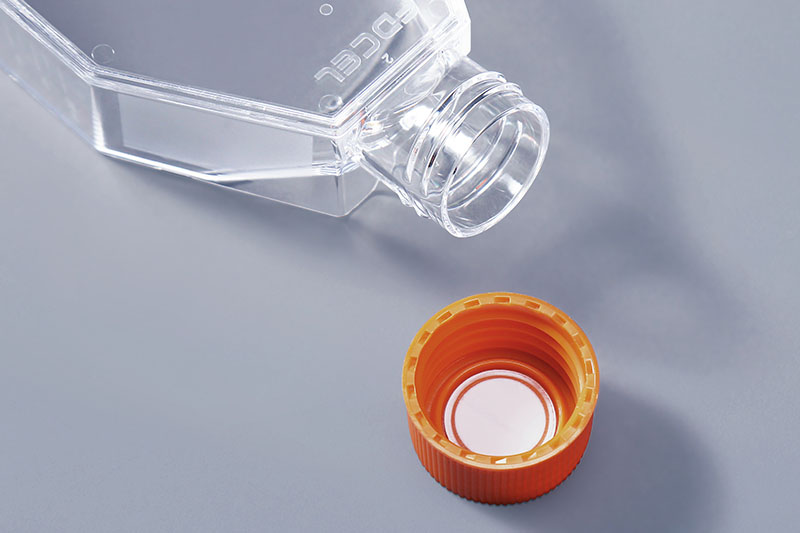The cell growth curve is a common method for determining the absolute growth number of cells, an important indicator for determining cell viability, and one of the basic parameters for the biological characteristics of cultured cells. There are many ways to measure the growth curve of cells, and counting in cell culture flasks is a common way.
FuDau T25 Cell Culture Flasks
Generally, after the cells are passaged, they are suspended for a short time and then adhere to the wall, and then spend different incubation periods of different lengths, that is, they enter the exponential growth phase of massive division. After the cells reach saturation density, they stop growing, enter the plateau phase, and then degenerate and die. In order to accurately describe the dynamic changes of cell numbers in the whole process, a typical growth curve can be divided into four parts: a slow-growing latent period, an exponential growth period with a large slope, a plateau-shaped flat-top period, and degeneration and decay. The growth curve was obtained by plotting the number of viable cells (10,000/mL) against the culture time (h or d).
FuDau T75 Cell Culture Flasks
The commonly used method is: inoculate the same amount of cells of the same generation in cell culture flasks of the same specification, take out several flasks of cells for counting every 24 hours after culture, take the culture time as the abscissa, and compare the number of cells at different times. The number is the bottom coordinate, and each point is marked and connected to form a line, that is, the growth curve of the cell, which can reflect the dynamics of cell growth.
Using the cell culture flask counting method to measure the growth curve of cells can not only understand the basic parameters of the biological characteristics of cultured cells, determine the absolute growth number of cells, and judge cell viability, but also can be used to determine the influence of external factors such as drugs on cell growth.
The FAI climbed 5.9 percent year-on-year in the first 11 months of 2018, quickening from the 5.7-percent growth in Jan-Oct, the National Bureau of Statistics (NBS) said Friday in an online statement.
The key indicator of investment, dubbed a major growth driver, hit the bottom in August and has since started to rebound steadily.
In the face of emerging economic challenges home and abroad, China has stepped up efforts to stabilize investment, in particular rolling out measures to motivate private investors and channel funds into infrastructure.
Friday's data showed private investment, accounting for more than 60 percent of the total FAI, expanded by a brisk 8.7 percent.
NBS spokesperson Mao Shengyong said funds into weak economic links registered rapid increases as investment in environmental protection and agriculture jumped 42 percent and 12.5 percent respectively, much faster than the average.
In breakdown, investment in high-tech and equipment manufacturing remained vigorous with 16.1-percent and 11.6-percent increases respectively in the first 11 months. Infrastructure investment gained 3.7 percent, staying flat. Investment in property development rose 9.7 percent, also unchanged.
 English
English




















































